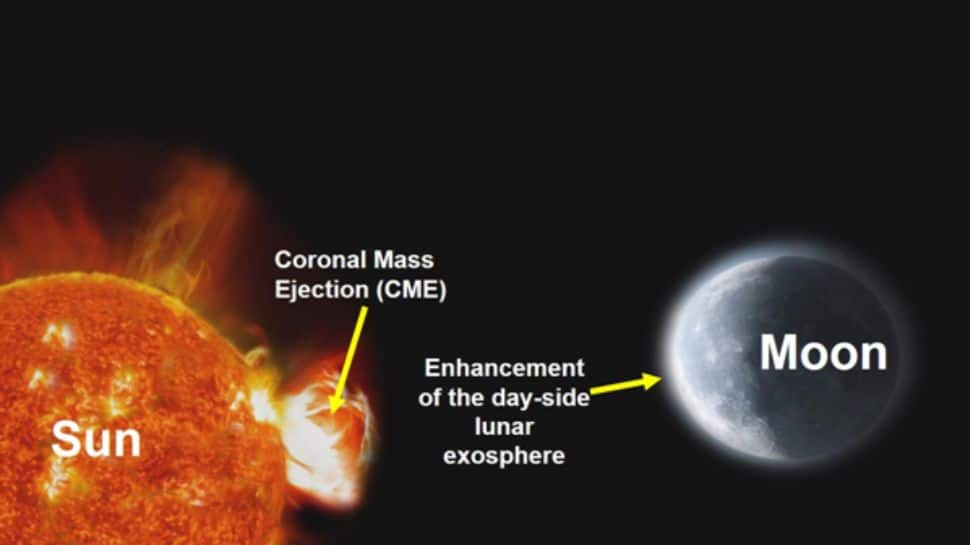Historic First: ISRO’s Chandrayaan-2 Captures Sun’s Fury Hitting Moon
In a landmark achievement, India’s Chandrayaan-2 has become the first mission globally to directly observe Coronal Mass Ejections (CMEs) from the Sun impacting the Moon’s atmosphere. This breakthrough provides unprecedented data about lunar space weather that will shape future Moon missions and human habitats.
Key Takeaways
- First-ever observation of solar CMEs affecting the Moon’s exosphere
- CHACE-2 instrument detected dramatic atmospheric changes during May 10, 2024 solar event
- Findings published in Geophysical Research Letters on August 16, 2025
- Critical implications for future lunar base design and safety
What Are Coronal Mass Ejections?
Coronal Mass Ejections are massive eruptions of solar wind and magnetic fields from the Sun’s corona. These events release billions of tons of charged particles into space at incredible speeds.
The Revolutionary Discovery
During a rare solar event on May 10, 2024, ISRO’s CHACE-2 instrument aboard Chandrayaan-2 recorded a dramatic increase in the Moon’s exosphere pressure. The density of neutral atoms and molecules surged by more than ten times, confirming long-standing theoretical predictions about solar impacts on the lunar environment.
Why the Moon’s Atmosphere is Unique
The Moon possesses a surface boundary exosphere – an extremely thin atmosphere where gas particles rarely collide. Unlike Earth, the Moon lacks a global magnetic field, making it highly vulnerable to solar activity.
“The Earth’s Moon has a very thin atmosphere, which falls under the category of ‘exosphere’, implying that the gas atoms and molecules in the lunar environment rarely interact despite their coexistence,” ISRO explained.
Scientific Implications
This discovery provides crucial insights into how solar storms affect airless bodies. The data reveals that CMEs significantly enhance the liberation of atoms from the lunar surface, temporarily transforming the Moon’s atmospheric conditions.
Future Lunar Missions
The findings have immediate relevance for upcoming lunar exploration. Architects designing Moon bases must account for these extreme solar events that can temporarily alter the lunar environment, posing potential challenges for human settlement.
ISRO’s groundbreaking research establishes India as a leading space power while providing essential data that will protect future lunar explorers and shape humanity’s permanent presence on the Moon.




